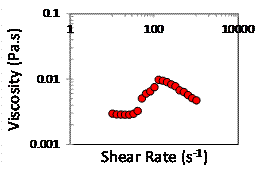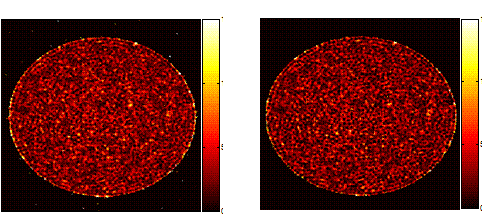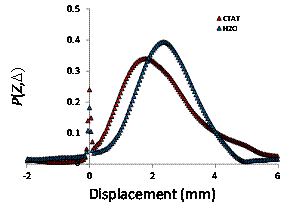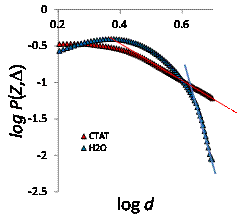Reports: DNI951832-DNI9: Non-Newtonian Fluid Dynamics in Porous Media Systems
Jennifer R. Brown, PhD, Montana State University (Bozeman)
Figure 1. Velocity images of water (left) and 10
mM CTAT in water (right) flowing through a packed bed of model spheres (dp
= 250 Figure 2. Viscosity as a function of shear
rate for 10 mM CTAT in water. Figure 3. Averaged propagators for a model
porous media system (dp= 241
Figure 4. At the left, averaged propagators
at an observation time of 750 ms are shown for water (blue) and CTAT (red). At
the right, the propagators plotted on a log-log scale. At long displacement
times, the slopes of the curves
















